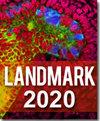The Mitogenome of Aleuroclava Psidii (Singh, 1931) (Hemiptera: Aleyrodidae) and Increased Number of Mitochondrial Gene Rearrangements in Whiteflies.
IF 3.1
4区 生物学
Q2 Immunology and Microbiology
引用次数: 0
Abstract
BACKGROUND In this study, the entire mitochondrial genome (mitogenome) of Aleuroclava psidii (Singh, 1931) (Hemiptera: Aleyrodidae) was sequenced. The species A. psidii is currently classified in the subfamily Aleyrodinae. This mitogenome is the first representative from the genus Aleuroclava. METHODS Next-generation sequencing was used to obtain the molecular data. We conducted phylogenetic analyses with 18 existing mitogenomes of whiteflies and three outgroups of psyllids, under the Maximum likelihood and Bayesian inference criteria. RESULTS The arrangement of genes differed between the mitogenome of A. psidii and the putative ancestral insect mitogenome, and also differed from the mitogenomes of other whiteflies. Mitochondrial gene rearrangements involved the transpositions of trnQ, trnY, and the protein-coding gene nad1. Most hemipteran mitogenomes have the same mitochondrial gene order as that inferred to be ancestral for insects. However, there are an increased number of gene rearrangements in the mitogenomes of whiteflies. Phylogenetic reconstructions supported Aleurodicinae and Aleyrodinae as being monophyletic. CONCLUSIONS Comparison of the gene order of mitogenomes revealed a clade-specific evolutionary trend in whiteflies. This study demonstrates the potential of using structural rearrangements to resolve major phylogenetic relationships within Aleyrodidae.Psidii Aleuroclava (Singh, 1931)(半翅目:Aleuroclava Psidii dae)的有丝分裂基因组与白蝇线粒体基因重排数量的增加。
本研究对psidii Aleuroclava (Singh, 1931)(半翅目:Aleuroclava psidii dae)线粒体全基因组(mitogenome)进行了测序。该物种目前被分类在假蝇亚科。该有丝分裂基因组是木纹属的第一个代表。方法采用新一代测序技术获取分子数据。采用最大似然和贝叶斯推断准则,对18种白蝇和3种木虱的有丝分裂基因组进行了系统发育分析。结果白蛉有丝分裂基因组的基因排列与推测的昆虫祖先有丝分裂基因组存在差异,也与其他白蛉有丝分裂基因组存在差异。线粒体基因重排包括trnQ、trnY和蛋白质编码基因nad1的转位。大多数半足类有丝分裂基因组具有与推断昆虫祖先相同的线粒体基因顺序。然而,在白蝇的有丝分裂基因组中,基因重排的数量有所增加。系统发育重建支持木犀草科和木犀草科是单系的。结论白蛉有丝分裂基因组基因序列的比较揭示了白蛉具有支系特异性的进化趋势。这项研究证明了利用结构重排来解决主要系统发育关系的潜力。
本文章由计算机程序翻译,如有差异,请以英文原文为准。
求助全文
约1分钟内获得全文
求助全文
来源期刊

Frontiers in Bioscience-Landmark
生物-生化与分子生物学
CiteScore
3.40
自引率
3.20%
发文量
301
审稿时长
3 months
期刊介绍:
FBL is an international peer-reviewed open access journal of biological and medical science. FBL publishes state of the art advances in any discipline in the area of biology and medicine, including biochemistry and molecular biology, parasitology, virology, immunology, epidemiology, microbiology, entomology, botany, agronomy, as well as basic medicine, preventive medicine, bioinformatics and other related topics.
 求助内容:
求助内容: 应助结果提醒方式:
应助结果提醒方式:


